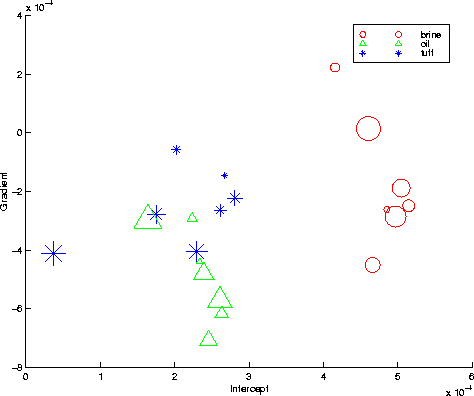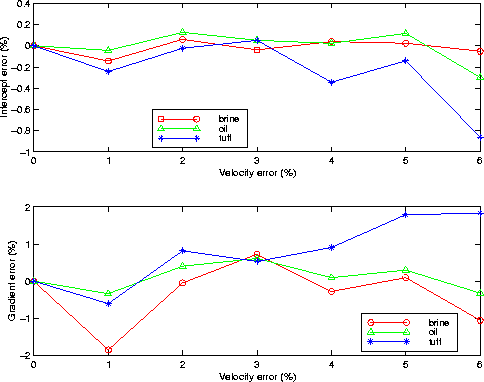




Next: Conclusion
Up: AVO inversion
Previous: Velocity anomalies effect
Using the synthetic data corresponding to model 2, we generated
several migration-velocity realizations by introducing coherent
percentage velocity errors at the overburden zone of the original
velocity model. Using each velocity realization, we applied 2-D
prestack wave-equation migration to the synthetic data;
we applied an additional residual moveout correction
and picked the resulting amplitudes. Figure 18
shows the crossplot of the intercept and gradient attributes
at CIGs location which correspond to a valley of the sinusoidal
irregularities;
the size in the plot symbol increases as the velocity error increases.
We can note that the intercept attribute is much less
sensitive to velocity errors than the gradient attribute.
Figure 19 shows the errors in the inverted attributes
as a function of the velocity errors used in the migration.
We can see that the maximum AVO intercept error is  for velocity
errors up to
for velocity
errors up to  (tuff case), whereas
for velocity errors of only 1%, the inversion of AVO gradient attribute
(brine case) has an error of 185%.
mig_vel
(tuff case), whereas
for velocity errors of only 1%, the inversion of AVO gradient attribute
(brine case) has an error of 185%.
mig_vel
Figure 18 Impact of velocity errors
in Intercept versus Gradient crossplot




 AB_error
AB_error
Figure 19 Impact of velocity errors
in Intercept and gradient attributes










Next: Conclusion
Up: AVO inversion
Previous: Velocity anomalies effect
Stanford Exploration Project
4/28/2000


